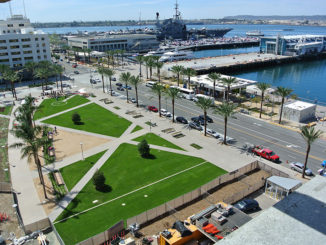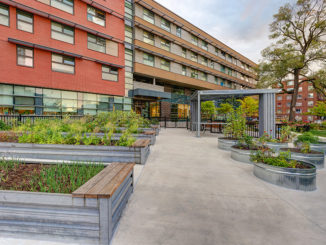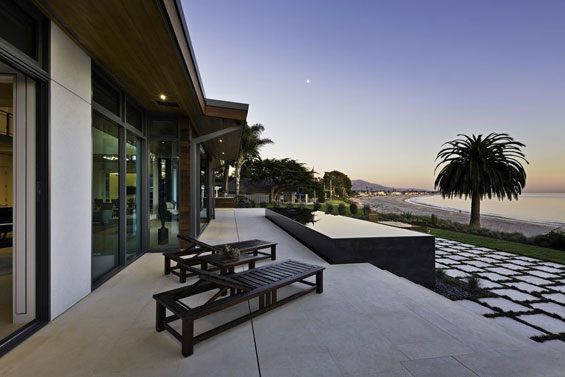
The owners desired a modern aesthetic to symbolize a break from their past and to signify a new beginning in their lives. The resulting modern beach house and gardens integrated these needs employing the California tradition of contemporary indoor – outdoor living.
The project is located on an exclusive section of beachfront in Carpinteria, California. The owners, captivated by the south facing beach frontage, with sweeping coastal views and the Channel Islands in the distance, selected this narrow site raised on a modest bluff for its natural beauty. Various constraints posed a challenge for the design team. Most intrusive was the noise from railroad and highway North of the property, which would require buffering. There were privacy concerns to consider as well, with the neighbors close by on either side of the relatively narrow lot. The ocean side was constrained by a geologic bluff top setback while the right of way of the private street further reduced the available lot. The original beach house had a myriad of existing tropical plants and palms, which would purposefully be re-used in the new landscape.
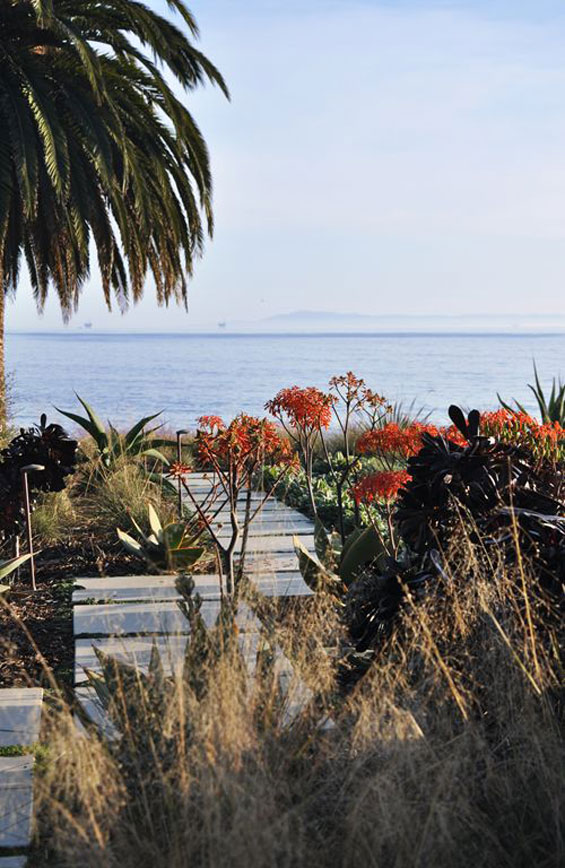
The plan took shape as a courtyard design in the Southern California tradition of indoor/outdoor living with forms, materials and landscape inspired by the spirit of Mid-20th century California Modernism. The landscape conceptual intent was to create a series of simple garden forms countering the site constraints while accentuating the indoor outdoor lifestyle. The design for the site includes the five gardens described below:
Street Side Public Garden: The owners wanted guests to be able to park on the north side of the street but did not want to encourage uninvited guests. The auto court pattern was carried across the lane, increased in scale and the materials transformed to a 4 x 4 pressure treated douglas fir frame with gravel pave infill. Certain areas of the grid were left open as planters. The planters were placed to discourage casual parking by strangers. The plant palette on either side of the lane consists of specimen agaves, aloes, succulents, cacti, yuccas and grasses. To visually screen the highway and railroad tracks a hedge was layered between the existing eucalyptus and Monterey cypress trees.
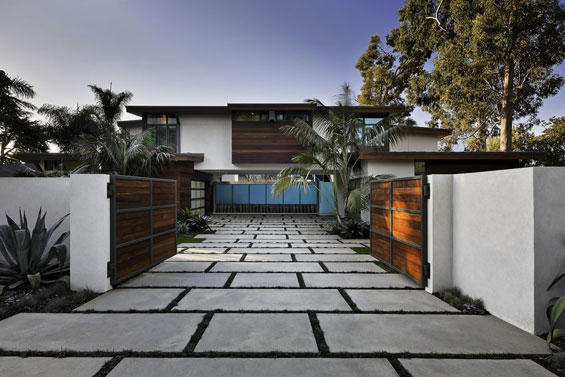
The Tropical Garden: Adjacent to the street side public garden, inside the protective garden walls is the tropical garden. The white plaster walls, softened with Weeping Mexican Bamboo both function to visually and audibly cut off Highway 101 and Pacific Union Railroad. This lushly landscaped garden reused many of the existing palms and tropical type plant material found existing on the site. The on site guest parking was incorporated into the garden using a permeable plantable concrete system, which disappears within the garden. Adjacent to the guest parking, the subterranean detention swale begins and continues under the precast concrete pavers and terminates in the Bluff Top Garden. Spatially and visually this garden provides a counterpoint to the structured architectural forms and buffer to the adjacent transit uses.
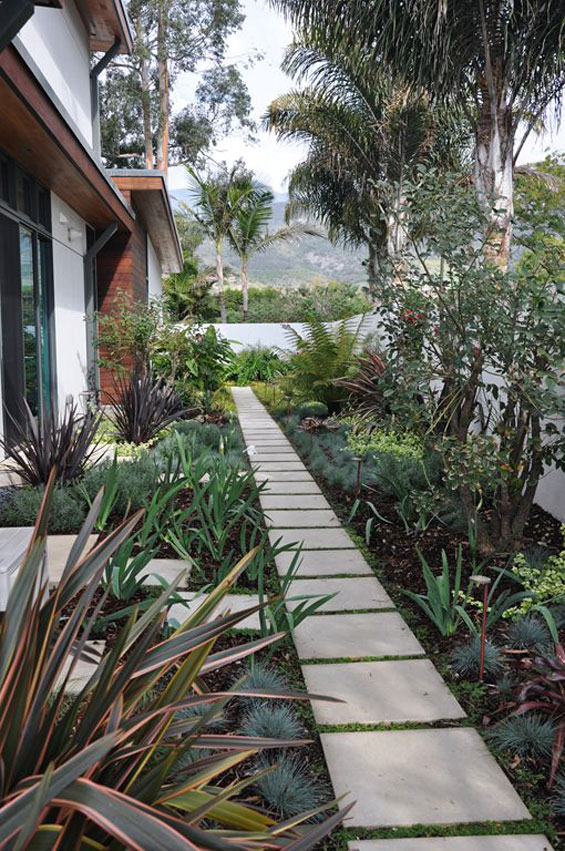
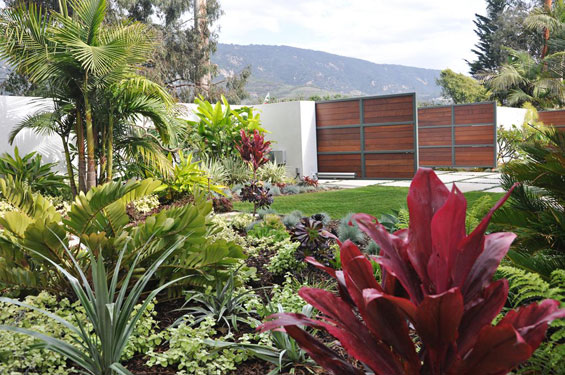
The Courtyard Garden: A ring of progressively taller, simple forms create a central courtyard. It is a private, sunny oasis protected from the elements of beachside living. An outdoor room shelters one from the wind, visibility of neighbors and beachgoers and is a noise buffer. The courtyard is a place for entertaining with its focus on the rainfall water feature, fireplace and the Mondrian-like wall juxtaposing ipe wood, azure colored glass and plaster. This outdoor room used planters as ‘area rugs’ so as not to take up valuable hosting space.
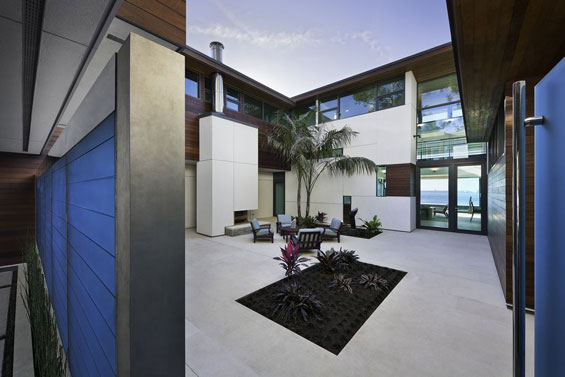
The Bluff Top Garden: The garden transitions from the enclosed Tropical Garden to the open Bluff Top Garden influenced by the adjacent Pacific Ocean. This garden is not enclosed by walls but instead plant material define its borders. Beachside the home opens up with spacious open living areas revealing panoramic ocean views and dramatic interior volumes that rise up above the bluff. A terrace running the full width of the house and paved in the same limestone as the interior flooring, extends the rooms outdoors through expanses of sliding glass walls. A raised four sided infinity edge reflecting pool visually and symbolically brings the surf line up to the house while screening the homes interiors from the view of beachgoers below. The reflecting pool, clad with porcelain tile that resembles Cor-ten steel, is a simple platonic form which mirrors the ever changing sky. Spatially it divides the terrace into active and passive zones.
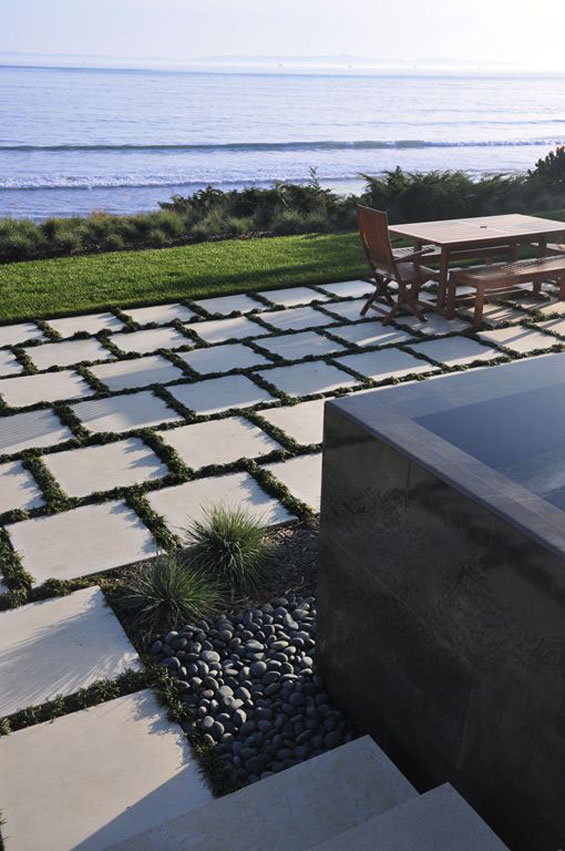
The Hillside Garden: Although originally planted in rosemary and junipers, the ocean facing slope was in a state of decline when the owners purchased the site. A naturalized slope was desired in contrast the neighboring turf lined bluffs. The irrigated grasses were removed and the junipers were trimmed as they were in good health and contributing to the stability of the bluff.
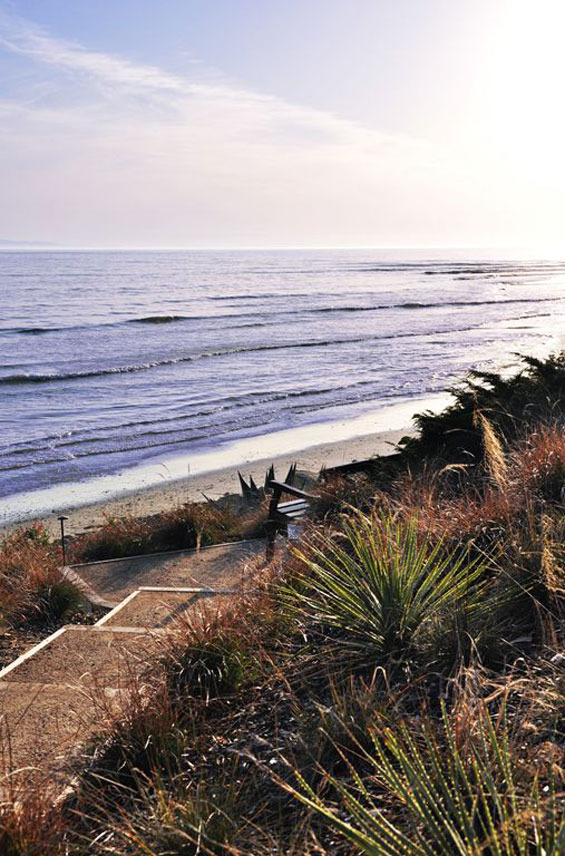
Padaro | Carpinteria California | Arcadia Studio
Image Credit | Ciro Ceolho and Arcadia Studio, Inc as noted

